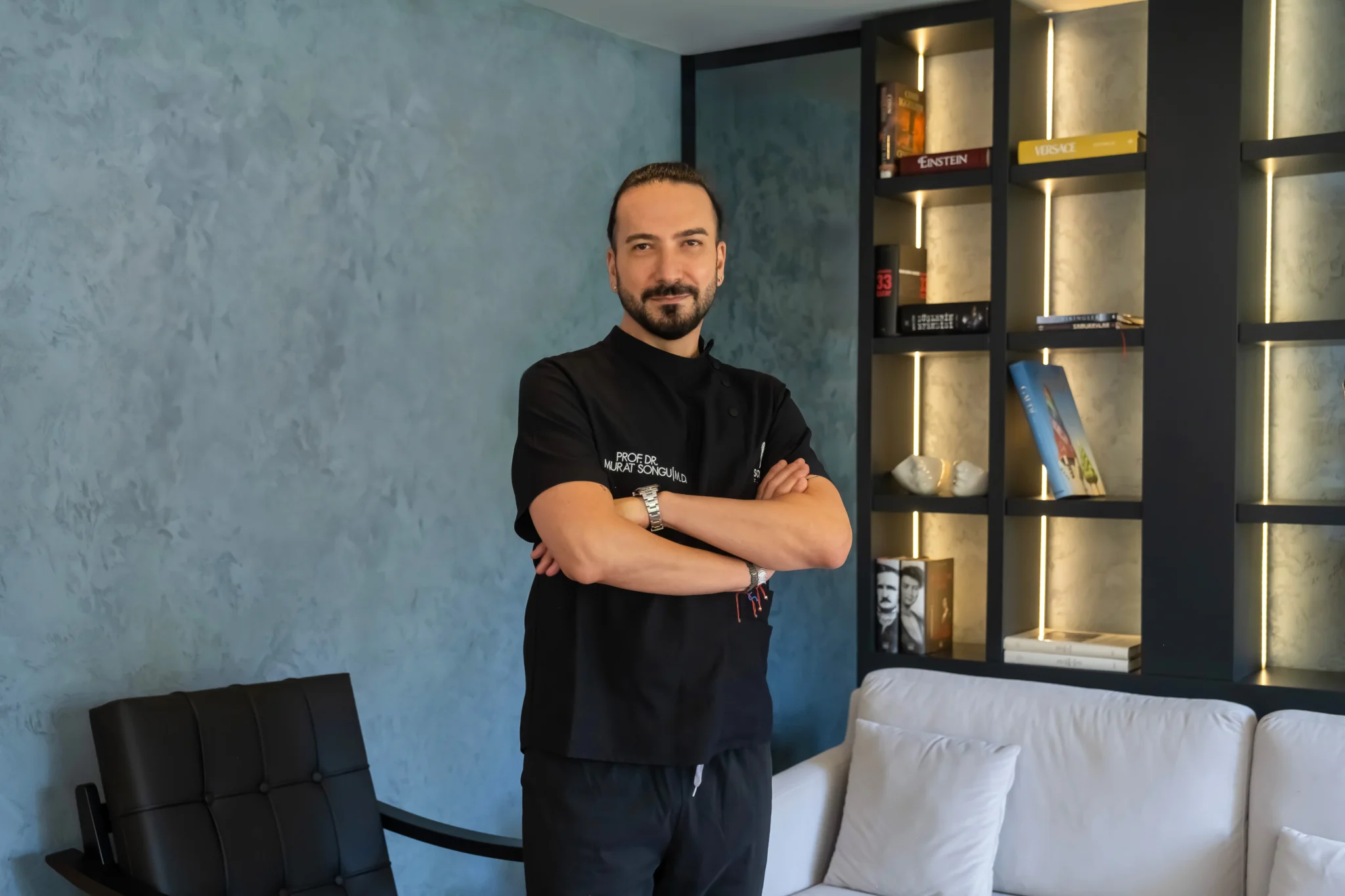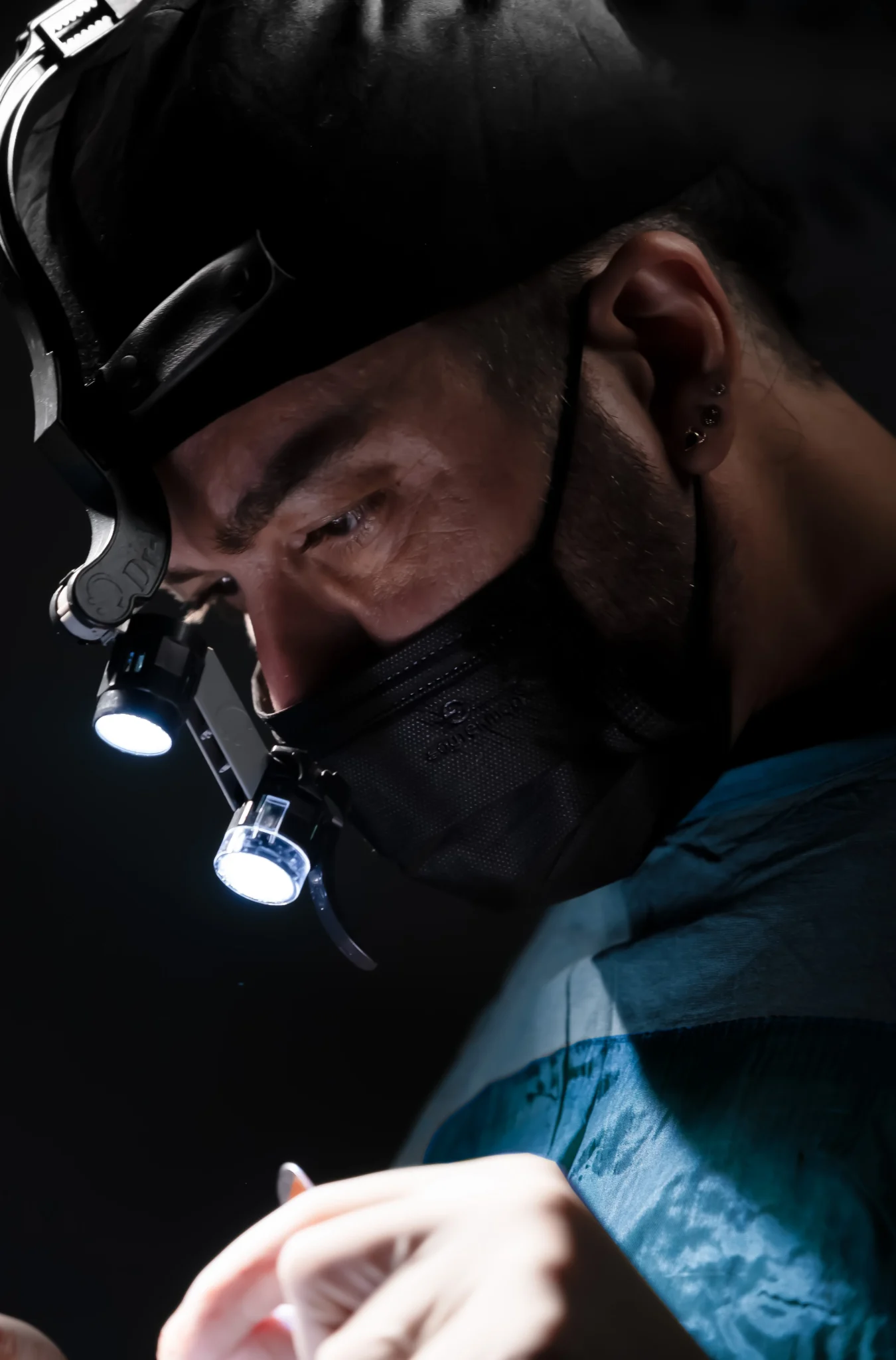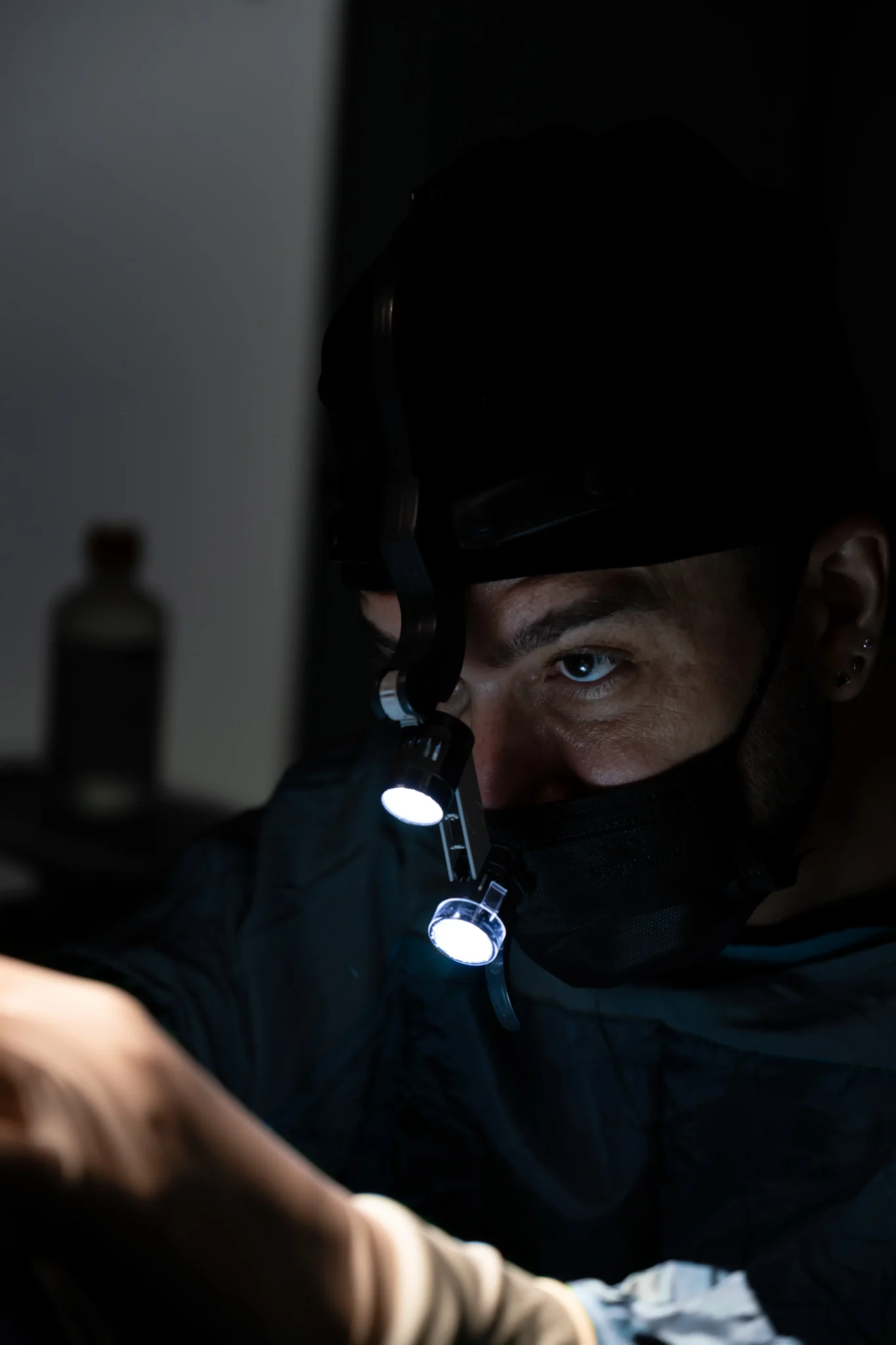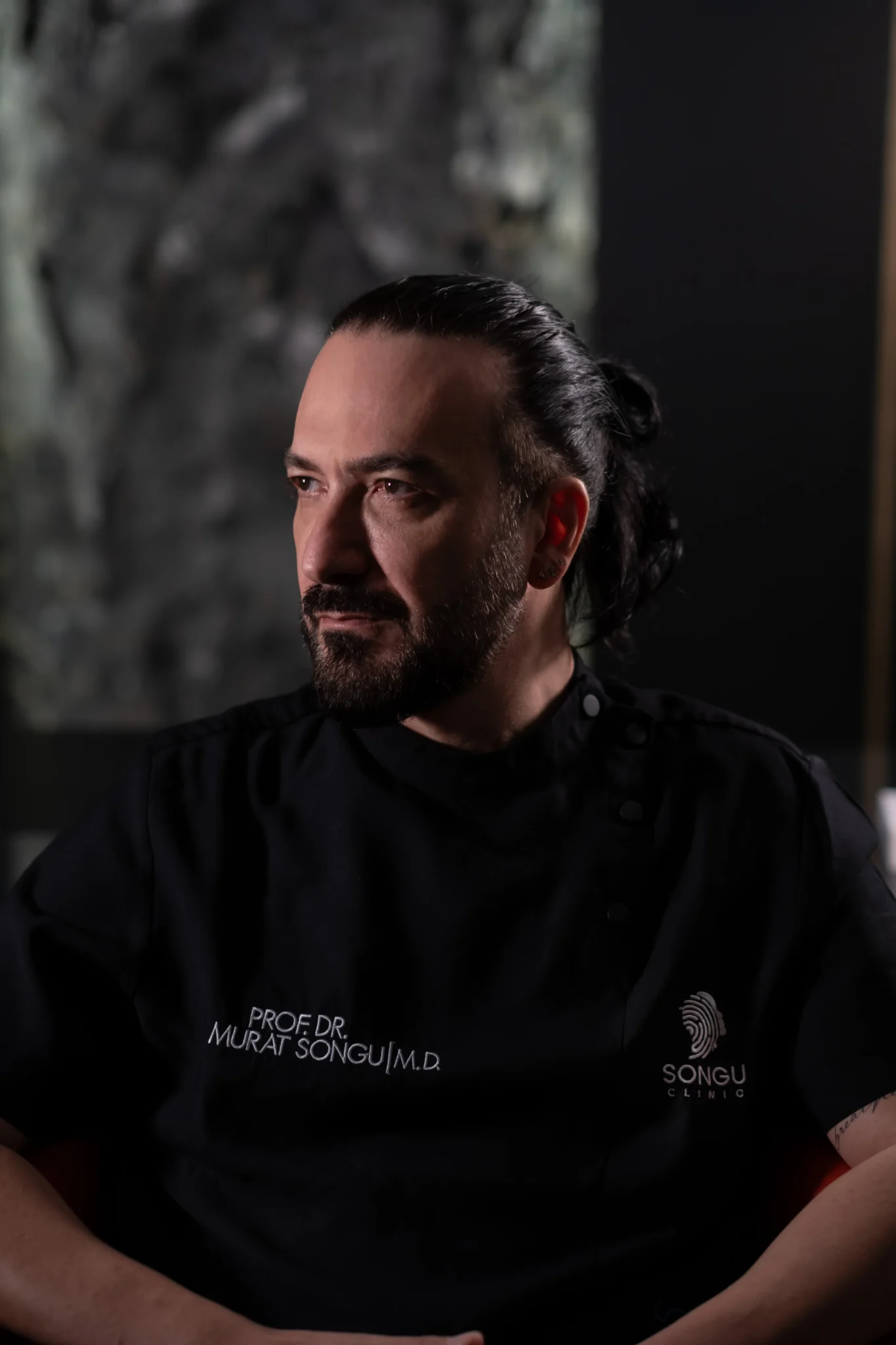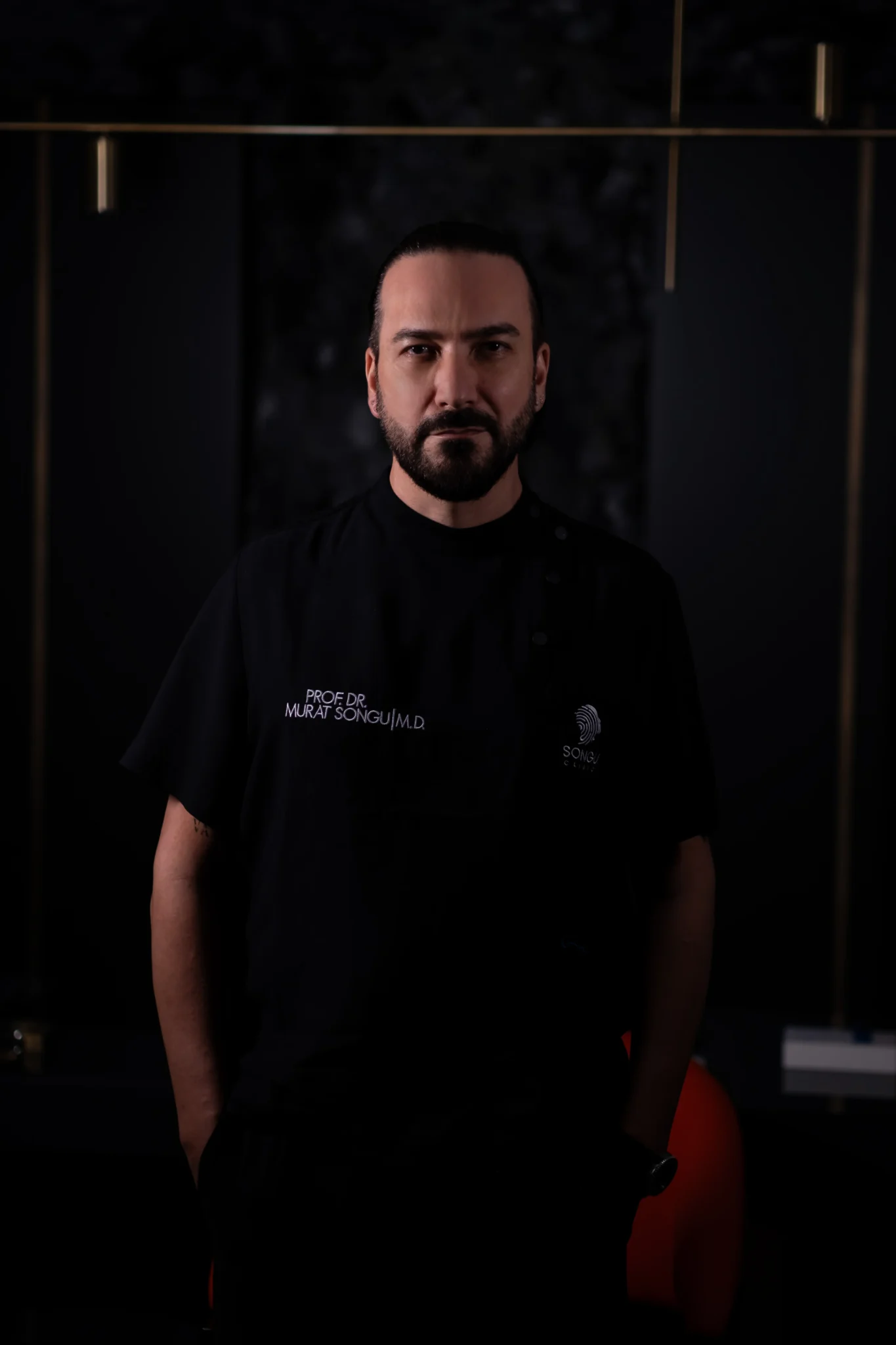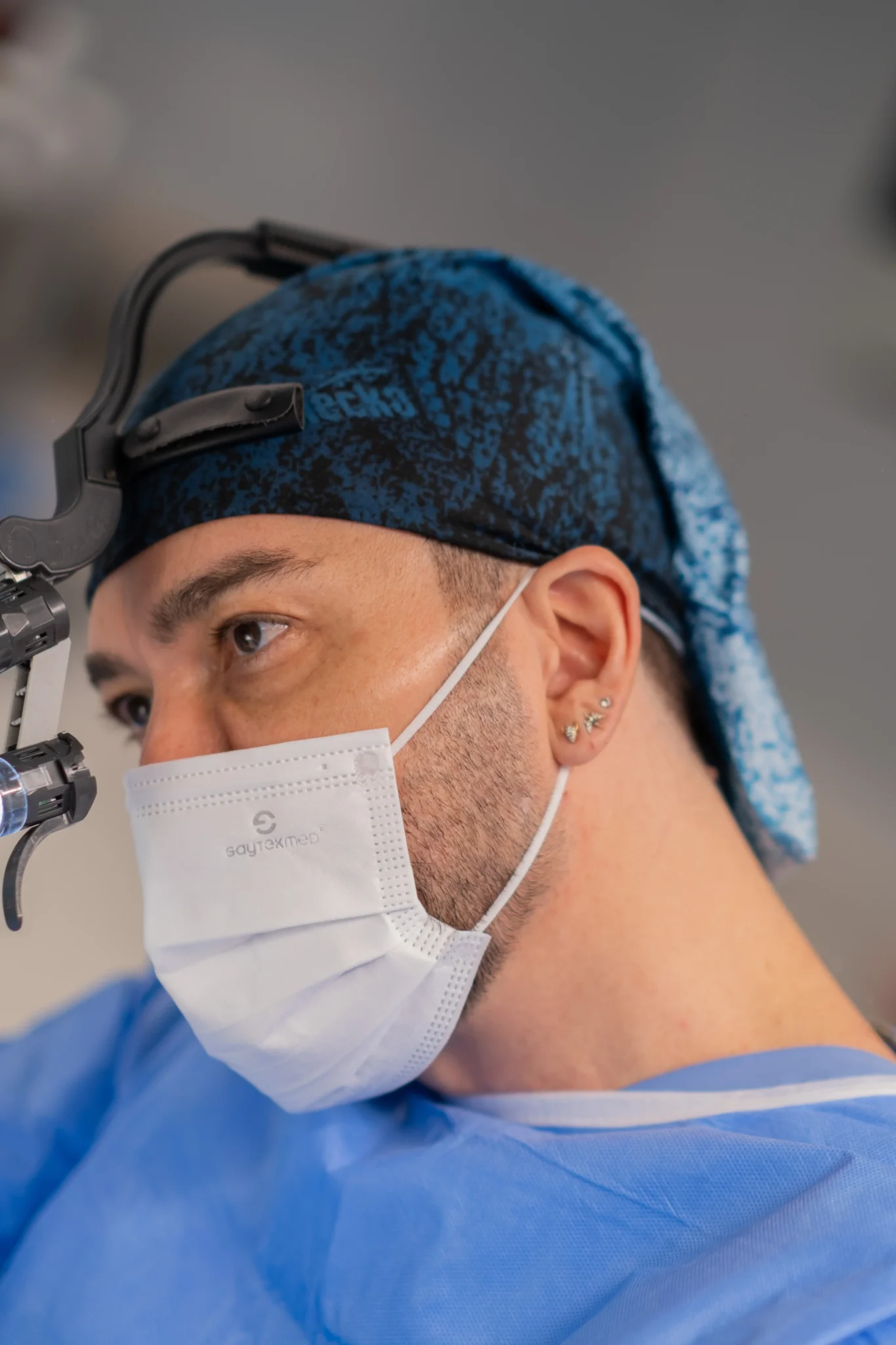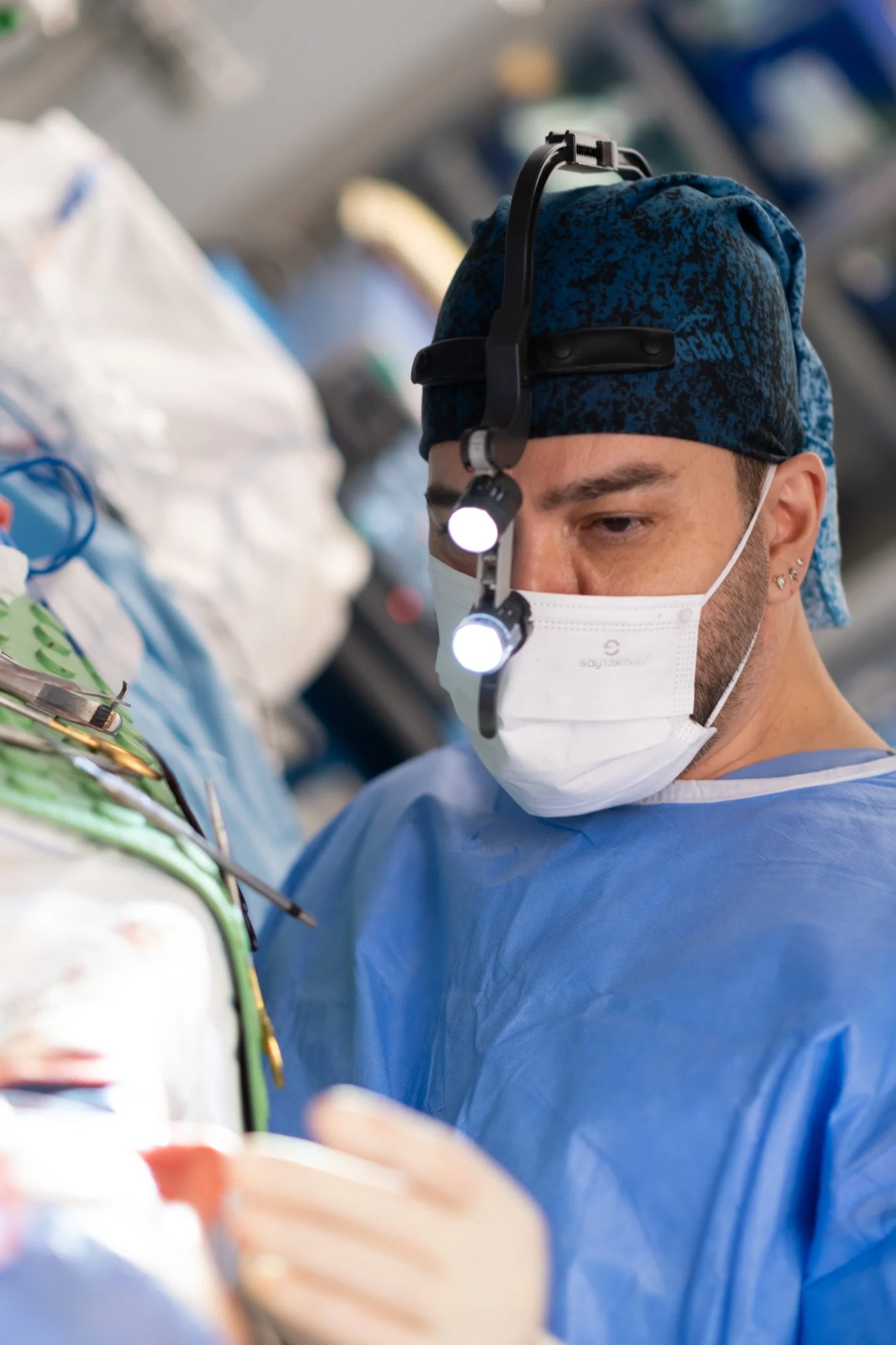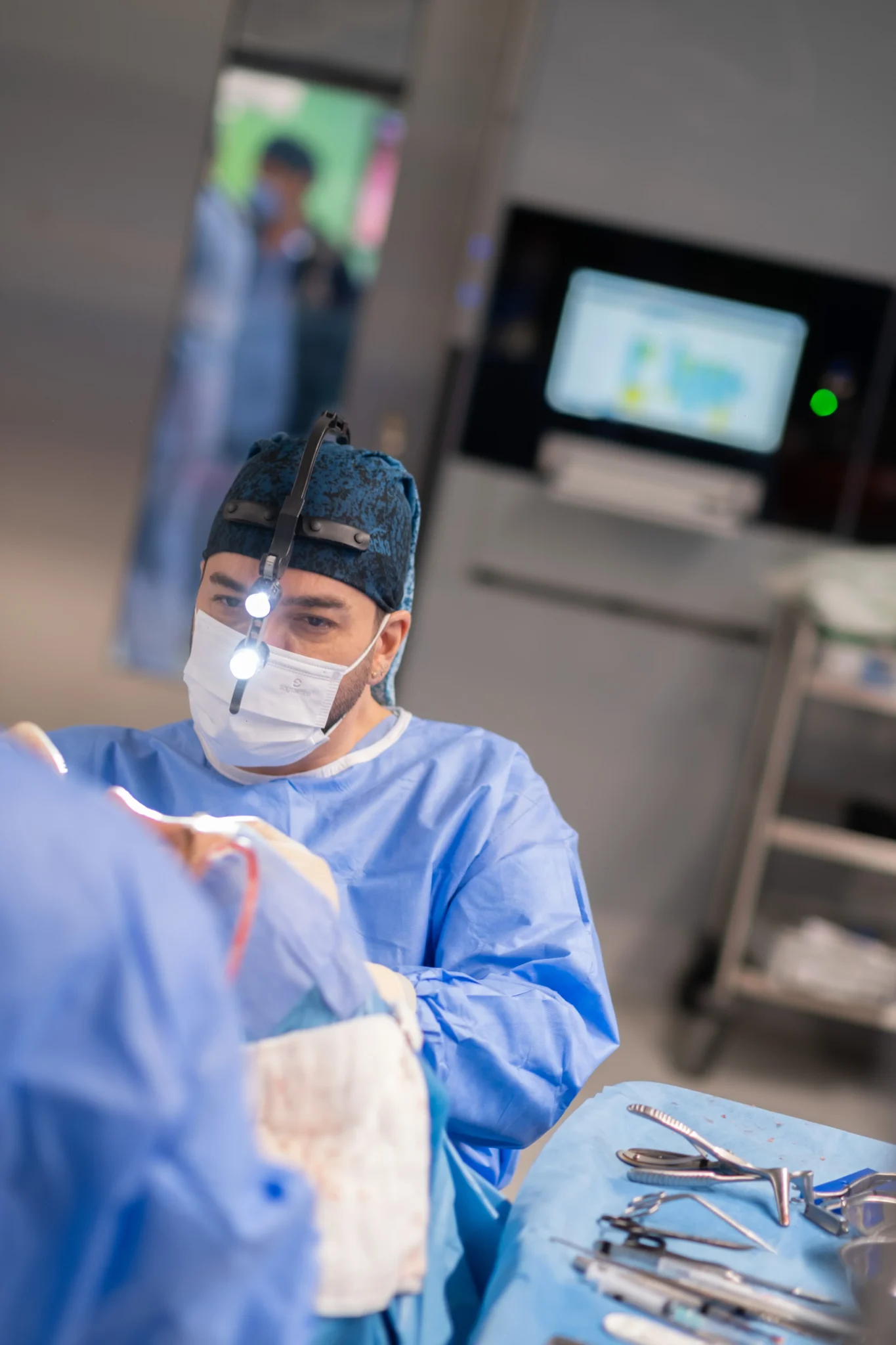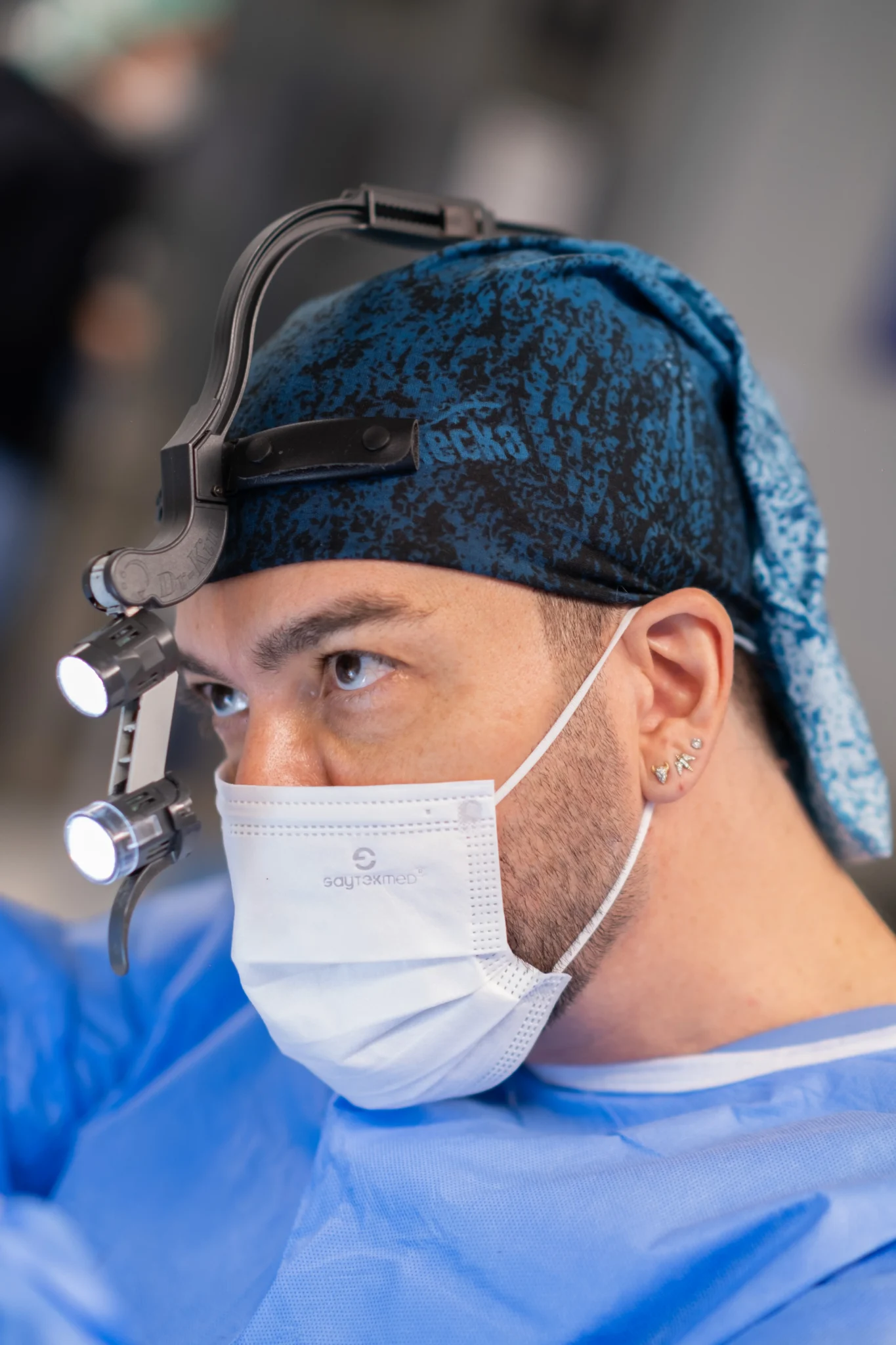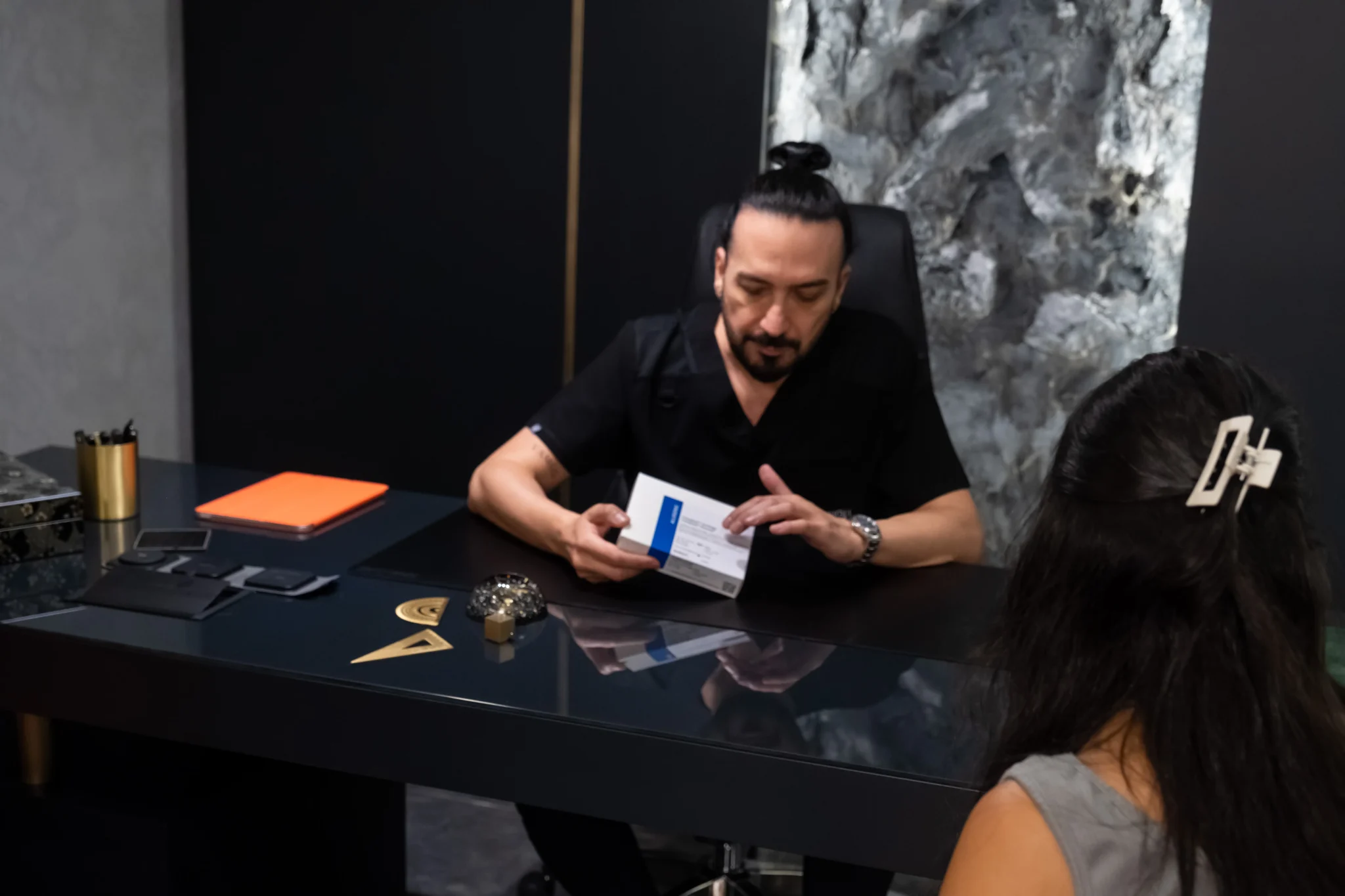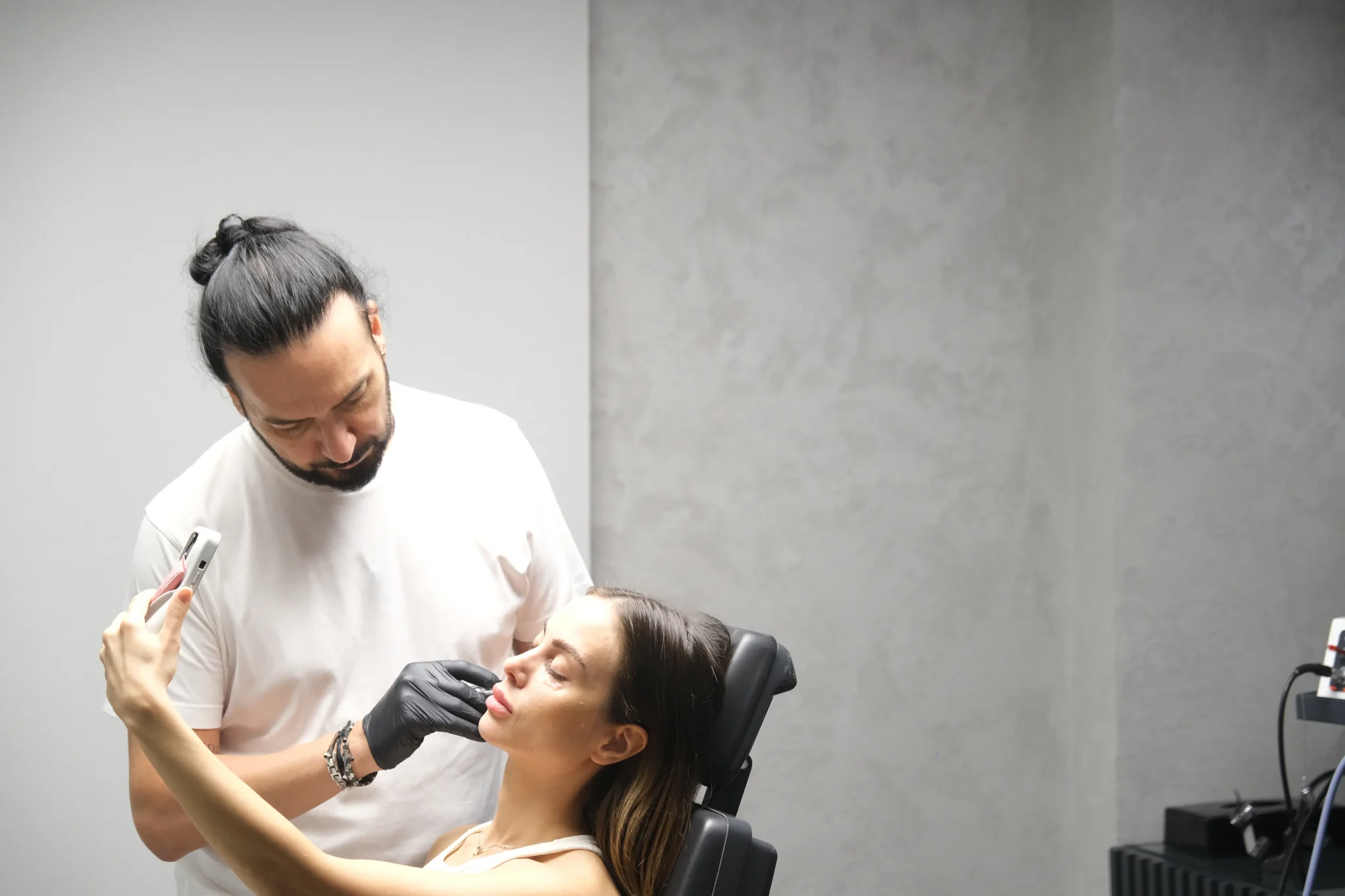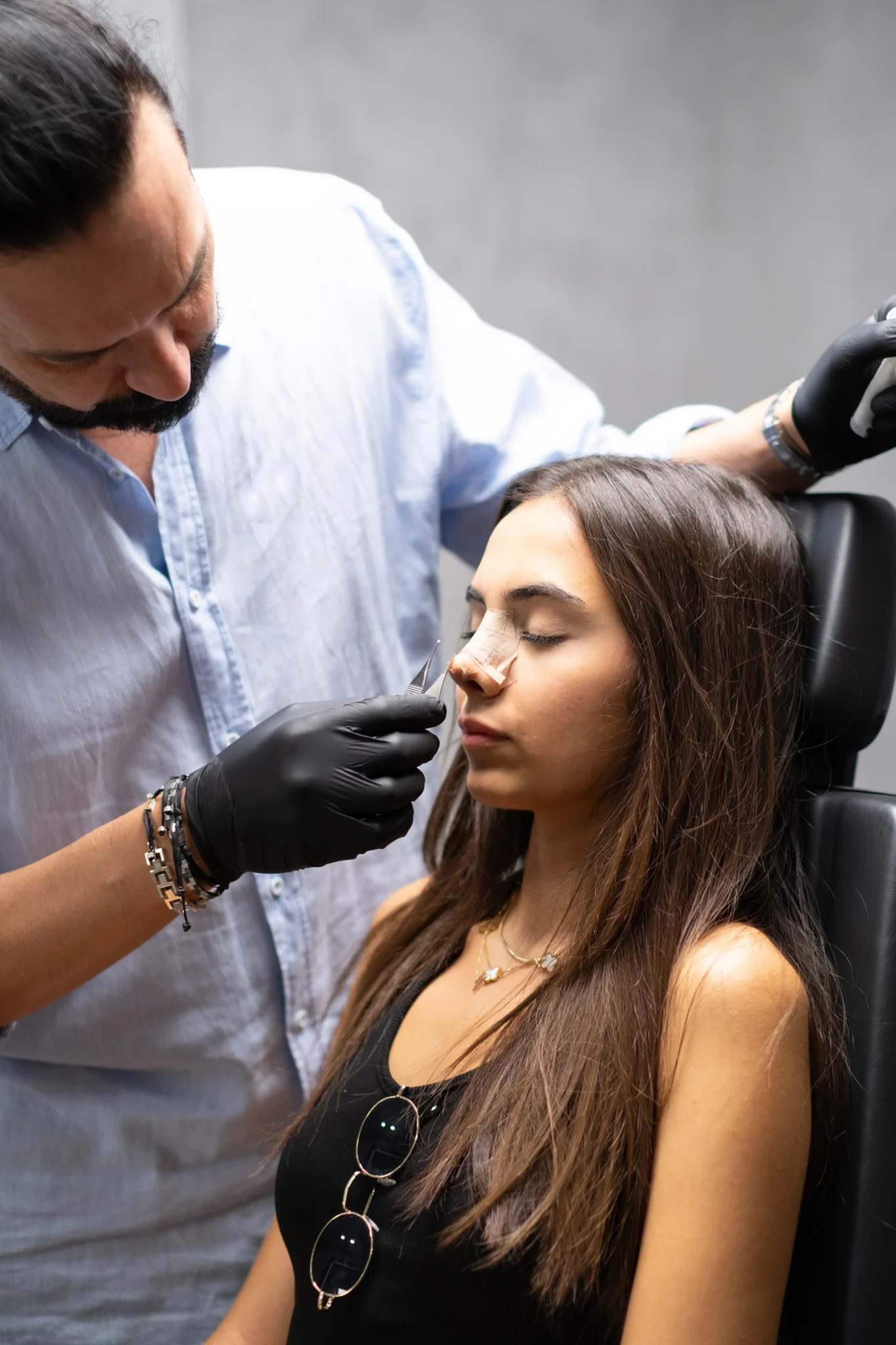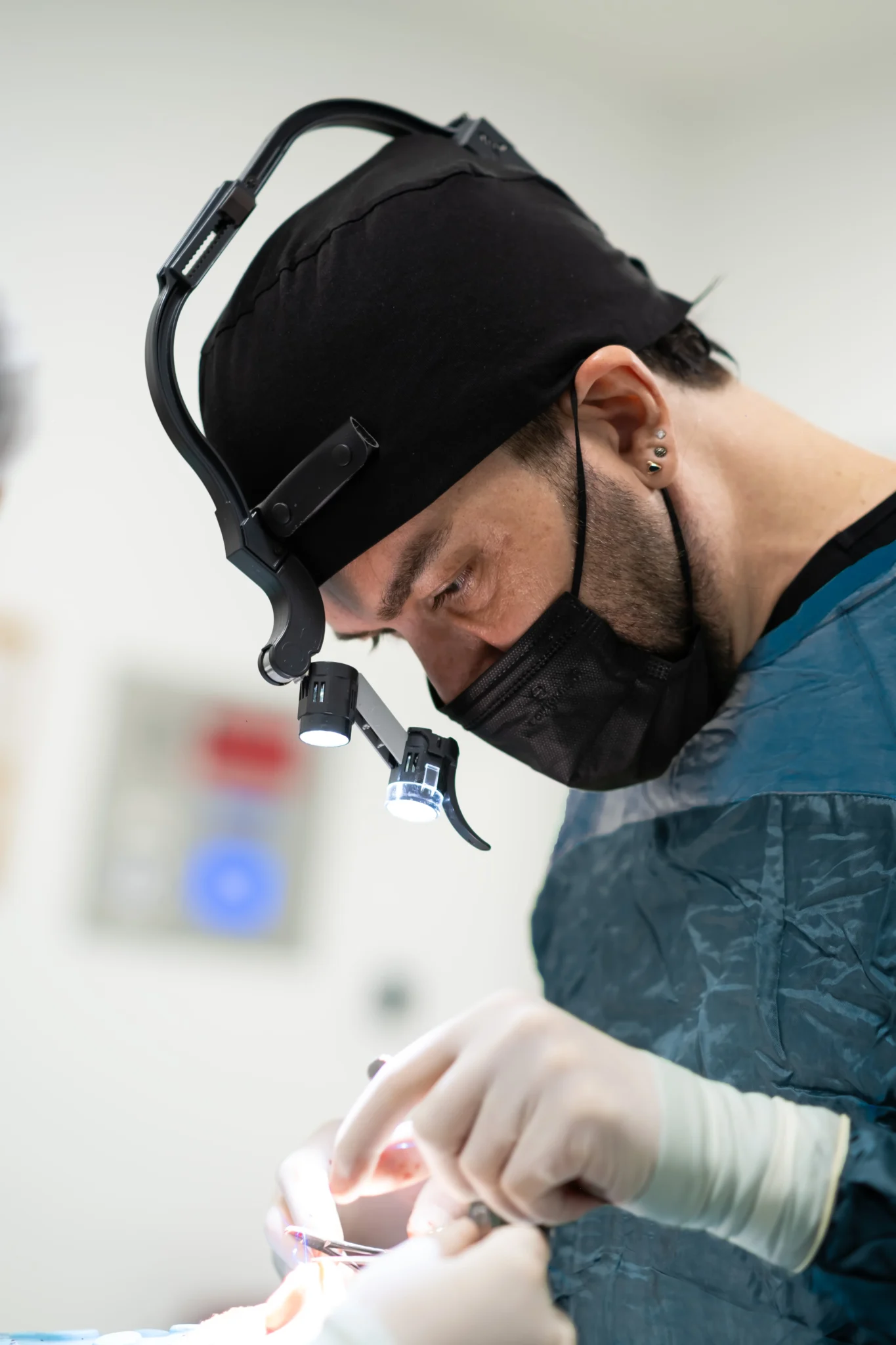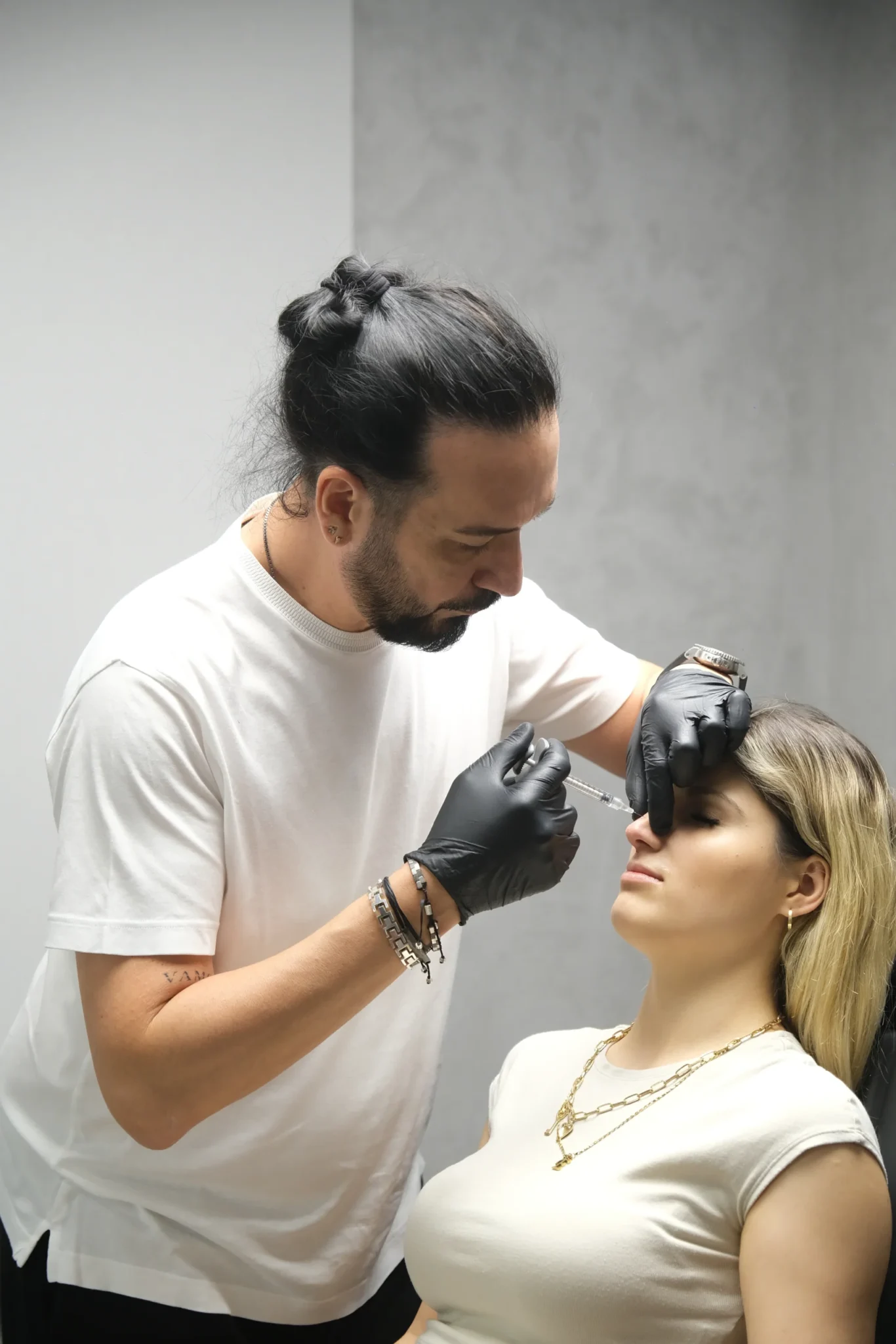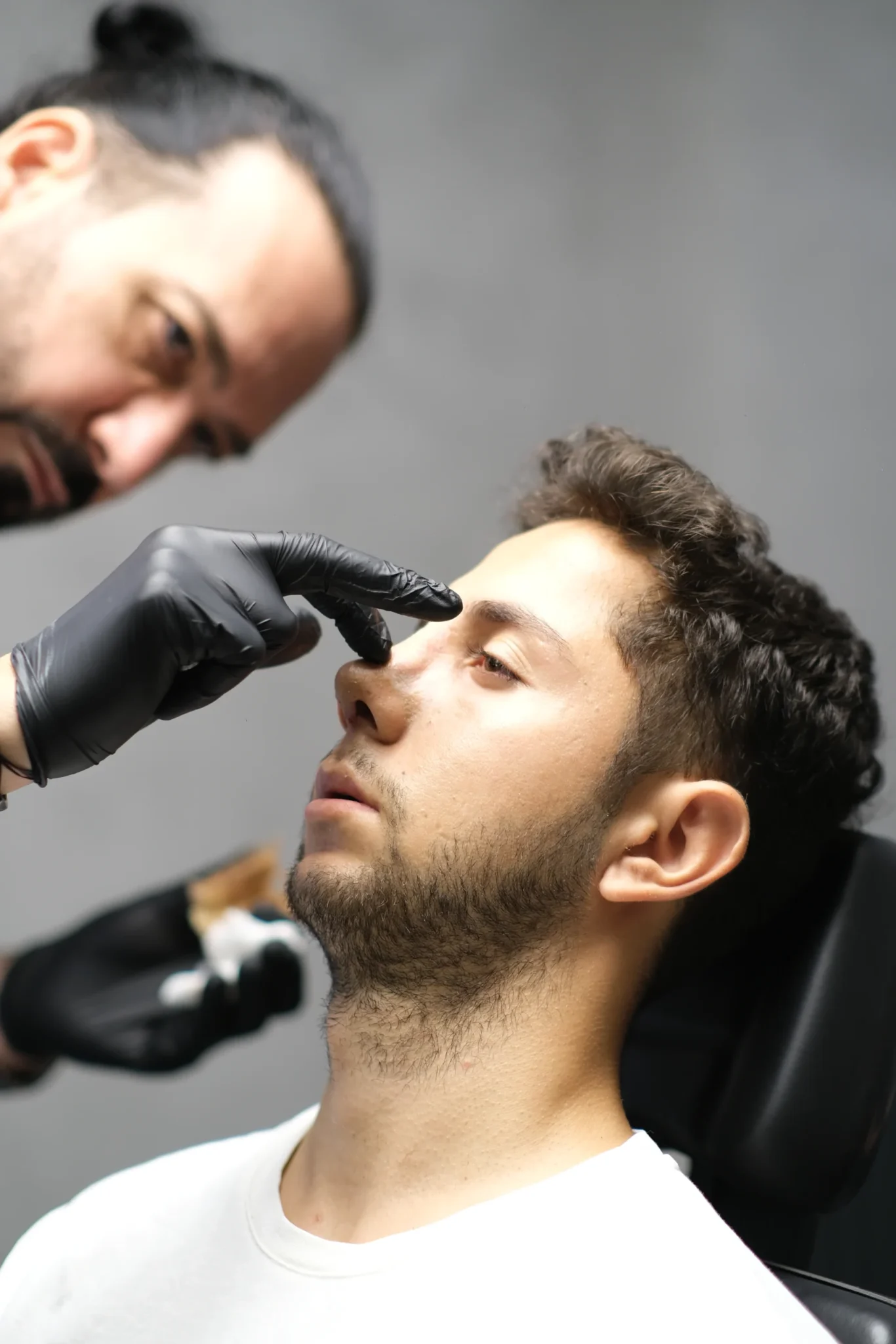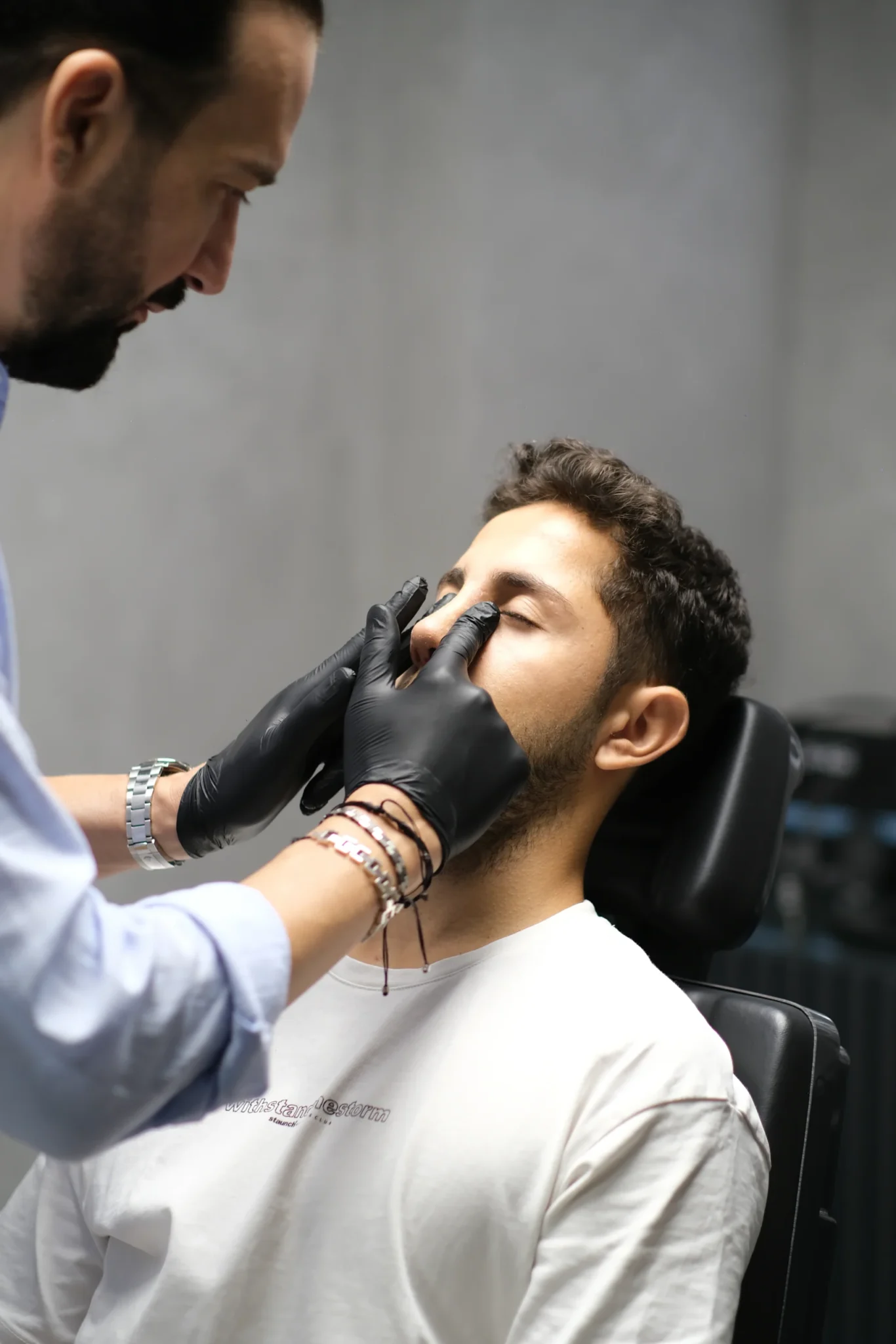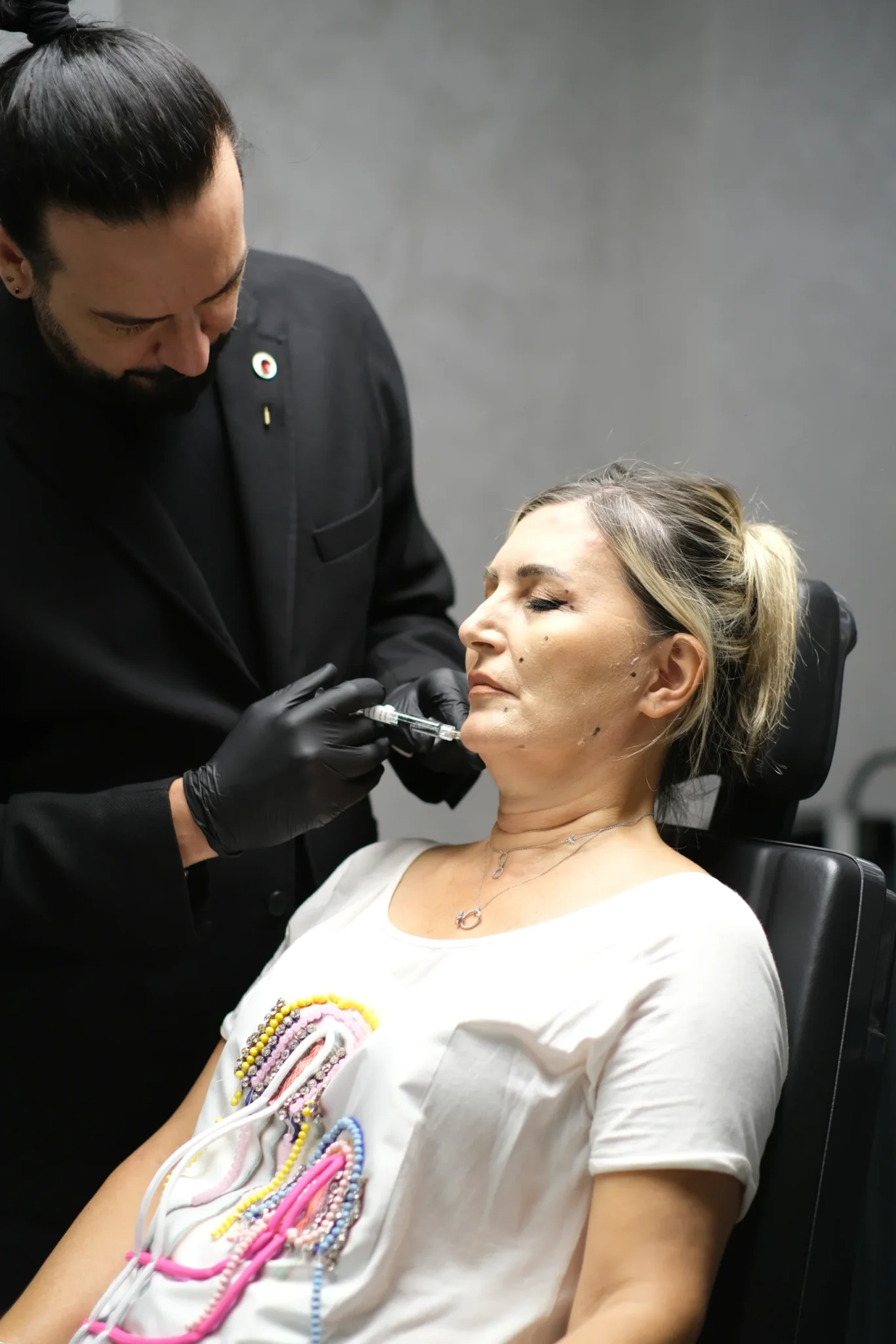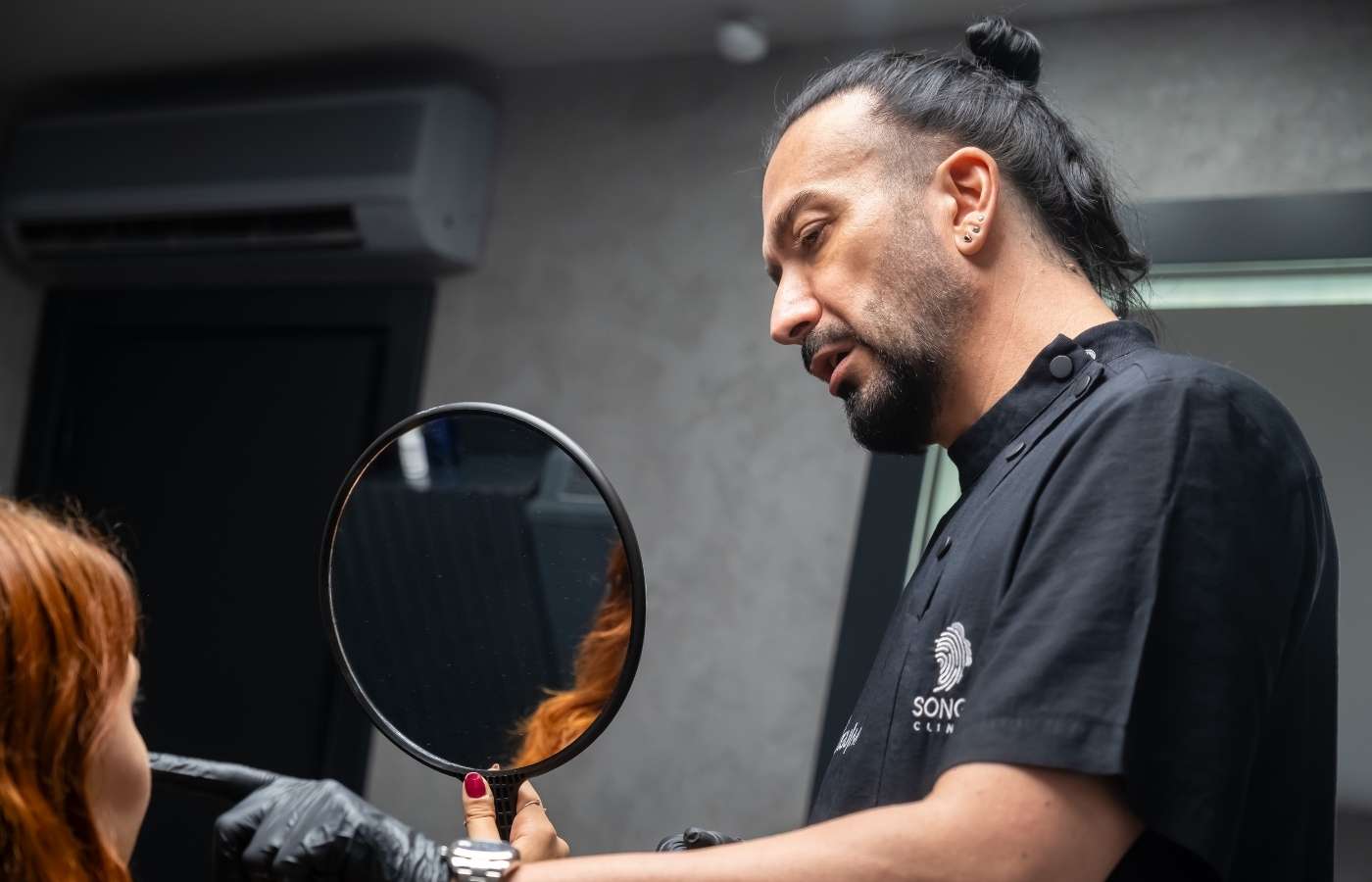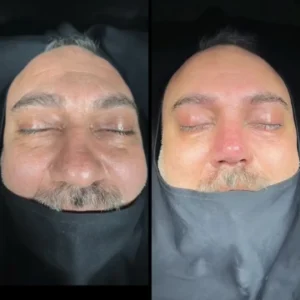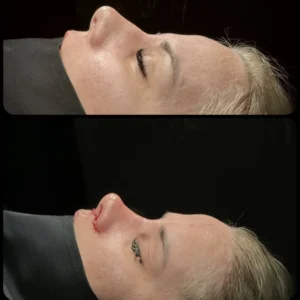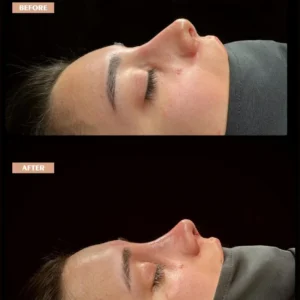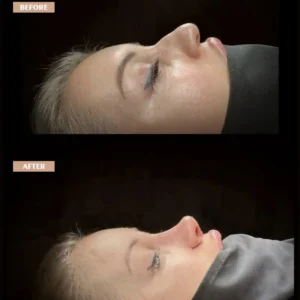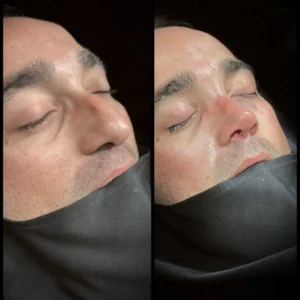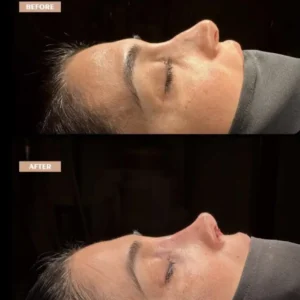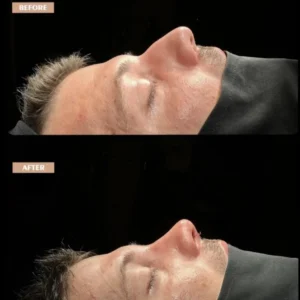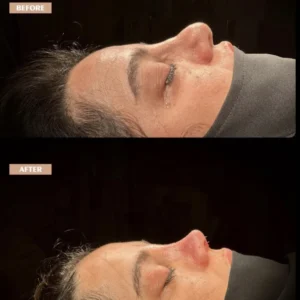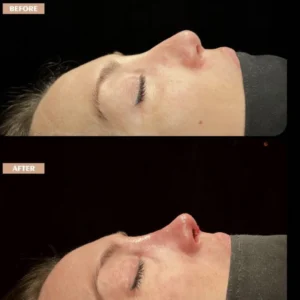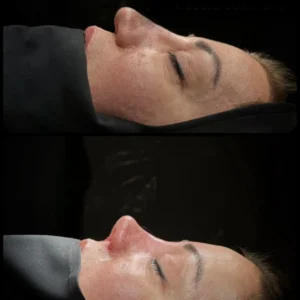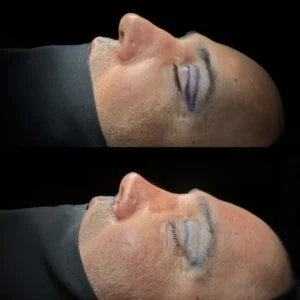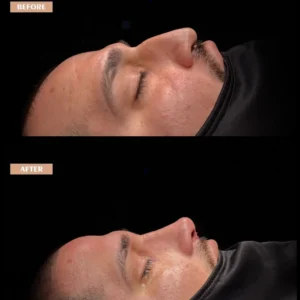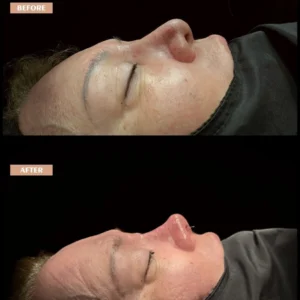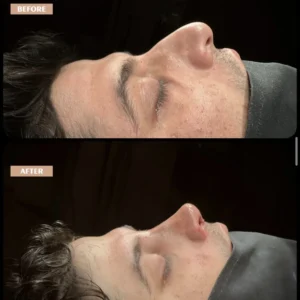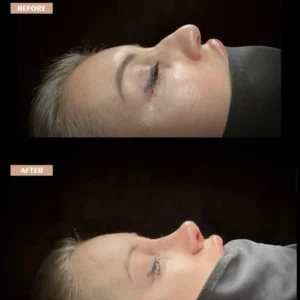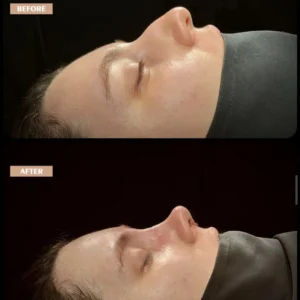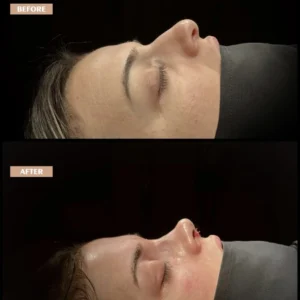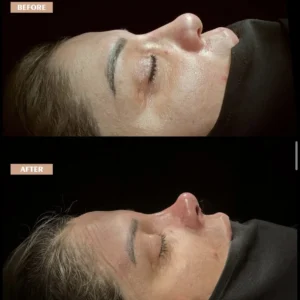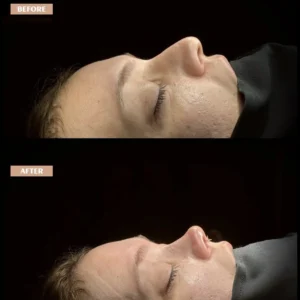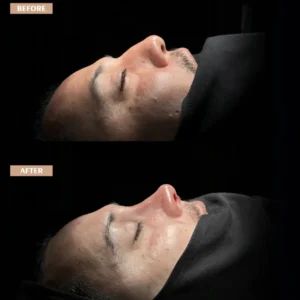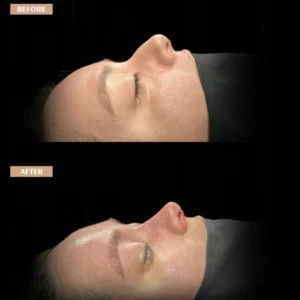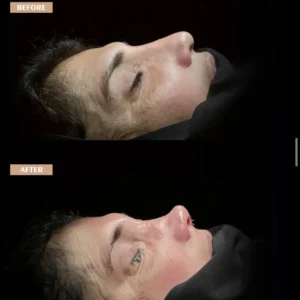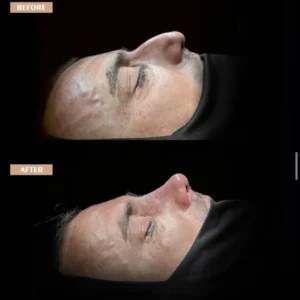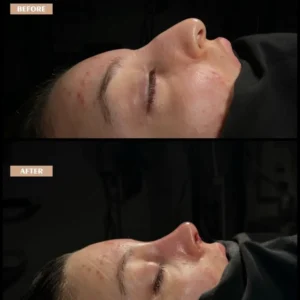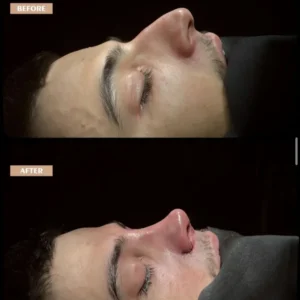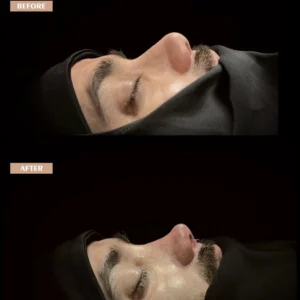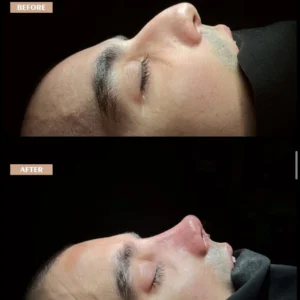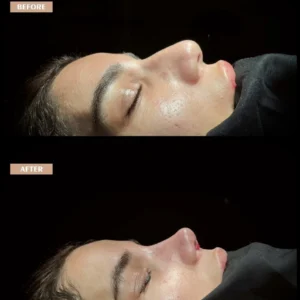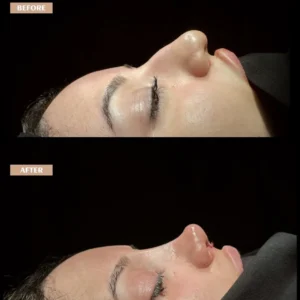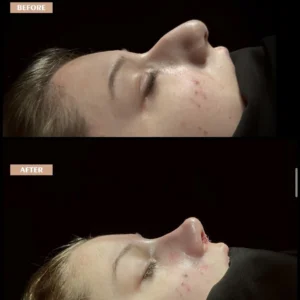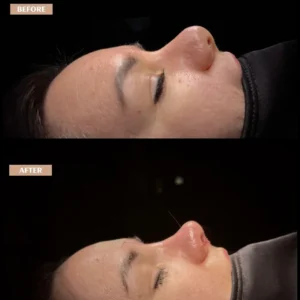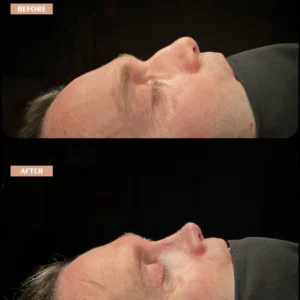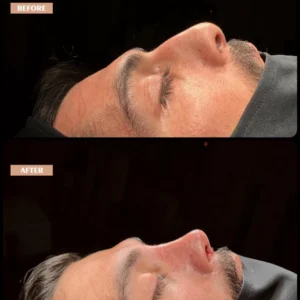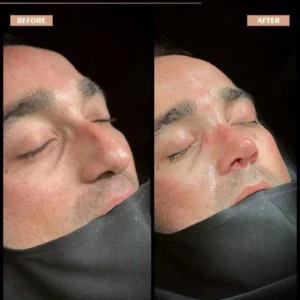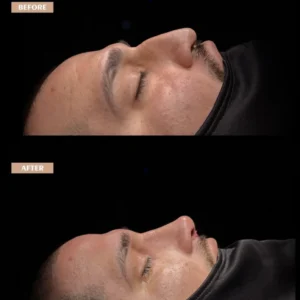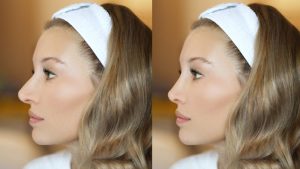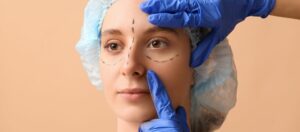
Nose reduction surgery offers an aesthetic solution to harmonise facial features. When performed meticulously, it can significantly improve facial symmetry. During the operation, preserving breathing functions is essential. In this process, the properties of the nasal skin and the thickness of its structure set the limits of intervention. Therefore, each patient’s nose cannot be reduced to the same degree. A skilled surgeon performs the procedure considering these factors. The results generally satisfy patients and increase their self-confidence. Thus, while aesthetic concerns diminish, a functional gain is also achieved.

Turkey's Rhinoplasty Doctor
Prof. Dr. Murat Songu
Revision Rhinoplasty Specialist
Born in İzmir in 1976, Prof. Dr. Murat Songu entered İzmir Atatürk High School and then, in 1994, started at Ege University Faculty of Medicine. He completed his specialty training in Ear, Nose, and Throat Diseases at Celal Bayar University. In 2005, he worked on rhinology and otologic surgery in Bordeaux, France, at St. Augustin Clinic with Dr. Guy Lacher and at Bordeaux University with Prof. Vincent Darrouzet.
One of the Best Surgeons for Nose Reduction Surgery in Turkey
Prof. Dr. Murat Songu is recognized as one of the top surgeons for nose reduction surgery in Turkey, skillfully refining overly large noses to harmonize with facial features. His deep understanding of nasal anatomy ensures aesthetically pleasing, functional outcomes tailored to each patient.
What Is Nose Reduction Surgery?
Nose reduction surgery aims for functional improvements as well as aesthetic balance. During this surgical procedure, following careful evaluations, a nasal shape suitable for the patient’s facial structure is targeted. The operation enhances facial symmetry, improving the person’s overall appearance.
The main focal points of the operation are:
- Reshaping the cartilage and bone structure.
- Structural adjustments to improve breathing functions.
- Correcting nasal contours to optimise the aesthetic appearance.
As a result, nose reduction surgery provides significant benefits both for health and aesthetics. Post-surgery, patient satisfaction is high, and an increase in self-confidence is observed in social life. Before the procedure, the patient’s expectations and facial structure are examined in detail, aiming to achieve the most suitable outcomes.
How Is Nose Reduction Surgery Performed in Children?
The process of performing nose reduction surgery in children begins after physical development is complete. Generally, nasal structure matures at age 17 for girls, while this limit is set at 18 for boys. These ages indicate that facial and body development is largely complete; therefore, these periods are considered appropriate for surgical intervention. However, certain special situations exist:
- If structural damage has occurred due to trauma,
- If congenital breathing problems are present.
Such conditions may necessitate exceeding the age limit. Early intervention may be performed on medical advice, primarily to resolve health issues. Since each child’s development process differs, the surgeon’s assessment is of great importance. Planning that takes development into account aims for both aesthetic and functional improvement.
What Is the Process for Women in Nose Reduction?
In women, nose reduction surgery is performed with regard to facial aesthetic balance. Surgeons develop an individual plan tailored to each patient’s facial structure. Fine and delicate lines are ideal for a female face; however, the nose must be in harmony with other facial features. A very small nose can sometimes conflict with other prominent features of the face. For this reason, surgeons adjust the nose size according to facial measurements:
- The nasal tip is generally designed to be more upturned and delicate.
- In profile view, the nasal bridge provides a smooth and gentle transition.
- The width of the nostrils is adjusted in proportion to the overall nose size.
During the operation, care is taken to integrate the nasal structure into the overall facial aesthetics. Aesthetic integrity is not limited to reducing size; it also ensures a look harmonious with the face. In this process, the patient’s features are examined in detail, and the most appropriate aesthetic solution is offered based on this analysis. Consequently, the surgery is completed in a way that highlights the patient’s natural beauty.
What Is Done During Nose Reduction Surgery in Men?
In men, nose reduction surgery is meticulously planned to align with masculine facial characteristics. The surgical procedure aims to achieve a more aesthetic appearance while preserving the masculine character of the nasal structure. Nose dimensions are carefully adapted to the man’s facial structure and proportions, yielding a natural and harmonious result. The points considered during surgery are:
- The length and tip of the nose should be balanced with the overall facial proportions.
- In some cases, distinctive humps on the nasal bridge maintain expressive strength.
- The width of the nasal base and the size of the nostrils are adjusted to suit the width of the man’s face.
After surgery, the nose presents a more defined structure harmonious with facial contours. Thus, the man’s natural facial expression and masculine lines are preserved, supporting a unique appearance. In this process, the surgeon evaluates aesthetic and functional needs together.
Before & After Gallery
Which Methods Are Used for Nose Reduction Surgery in Older Adults?
In older adults, nose reduction surgery is performed with particular attention to adapting to age-related changes. In individuals whose skin has lost elasticity and whose facial contours have noticeably changed over time, aesthetic interventions gain importance. During surgery, the surgeon aims to maintain aesthetic balance without disrupting the natural contours of the face, acting as a counterbalance to the changes brought by ageing. Special attention is given to the following elements during the procedure:
- Compatibility with the overall facial structure,
- Use of techniques appropriate to skin characteristics,
- Support for breathing functions.
In this process, the surgeon’s experience is crucial in considering the patient’s general health and facial features. Improved breathing functions and a more balanced facial expression can enhance quality of life after surgery. Therefore, the operation should be designed specifically to the needs and expectations of older patients, enabling them to step into a happier social life with both aesthetic and functional improvements.
What Are the Stages of a Nose Reduction Operation?
Nose reduction surgery is performed using two main techniques. The first technique, the closed method, is carried out with incisions made inside the nose. With this technique, the surgeon must work carefully because the field of view is limited. As the incisions are inside the nose, no external scar remains. In the second method, the open technique, a small incision is made at the nasal tip. This incision allows the surgeon to see the nasal structure more clearly and make more detailed corrections.
Closed technique:
- Incisions are made inside the nose.
- No visible scar remains.
- Field of view is limited.
Open technique:
- A small incision is made at the nasal tip.
- Allows the surgeon to see the nose better.
- More detailed corrections are possible.
Both techniques require a high degree of expertise and care. The open technique may be particularly suitable for more complex cases. The duration of the operation depends on the detail and complexity of the procedures performed but generally takes between 2-3 hours. Rhinoplasty is an operation performed under general anaesthesia.
What Are the Risks of Nose Reduction Surgery?
Nose reduction surgery carries certain risks that require attention. During this operation performed under general anaesthesia, side effects specific to anaesthesia may occur. In addition, bleeding and infection are common complications. After surgery, patients may sometimes encounter the following problems:
- Crusting inside the nose
- Loss of skin sensation
- Hardening of tissues
- Discolouration
- Swelling and pain
- Scar tissue formation
To manage these risks, the patient should choose an experienced surgeon and go through a comprehensive pre-operative evaluation process. The surgeon informs the patient about possible risks and meticulously prepares for the operation, thereby reducing the risk of complications and maintaining patient safety at the highest level. The patient’s adherence to the surgeon’s recommendations in the postoperative period also positively affects the healing process.
What Should Be Done After Nose Reduction Surgery?
The postoperative period of a nose reduction operation is a process that must be managed carefully. There are measures that need to be taken to speed up healing and prevent possible complications. In the first days after surgery, it is essential to keep the nasal area dry. During this period, care should be taken not to get the cast or bandages wet. Applying cold compresses around the eyes during the first few days is effective in reducing swelling and bruising.
- Heavy physical activities should be avoided for five days after surgery.
- It is recommended to keep the head elevated by using a high pillow.
- Facial expressions should remain as calm as possible, and the use of facial gestures should be limited.
- Avoid tight or restrictive clothing for the first 3 weeks.
- Avoid impacts to the nose for the first 3 months and choose light glasses.
Postoperative skin care is also very important. The nasal skin should be cleaned very gently. Sun protection and avoiding extreme heat are required for the first six months after surgery. When these recommendations are followed, successful results are obtained both aesthetically and functionally.
How Long Is the Recovery Period After Nose Reduction Surgery?
The recovery process after Rhinoplasty varies from person to person. The first three days post-operation are the most critical period, during which regular ice application around the eyes is essential. Swelling is most intense during these days, and resting with the head elevated supports healing. At the end of the first three days, if a nasal tampon is present, it is removed, which brings relief to the patient. Accessories such as glasses that can exert pressure should be avoided during the first 3 months.
- Return to work is possible at the end of the second week.
- By the end of the third week, swelling and bruising are expected to subside; light exercises may begin.
- More strenuous physical activities are introduced between 4-6 weeks.
- Complete reduction of swelling and attainment of the final nasal shape may take six months, while in individuals with thick skin this period may extend to two years.
During this time, the patient should take the following measures to accelerate healing and reduce the risk of complications:
- Keep the head elevated,
- Avoid hot baths and do not wet the splint,
- Do not blow the nose,
- Avoid movements that could apply pressure to the nose.
How Is a Large Nose Reduced?
Before the operation, the surgeon evaluates the patient’s facial structure and determines how much reduction will be performed. The properties of the nasal skin and bone structure are limiting factors for the extent of intervention.
The procedures performed during surgery include:
- Reshaping the nasal bones,
- Correcting the nasal dorsum,
- Reconstructing the nasal tip if necessary.
Afterwards, the patient’s nasal structure attains a more natural and harmonious appearance. Breathing functions are not neglected during this process.

